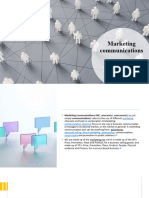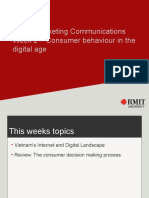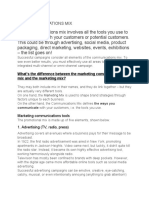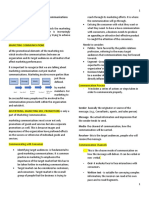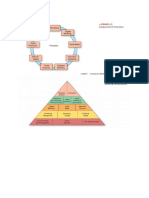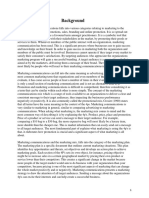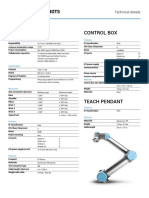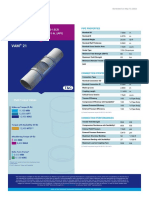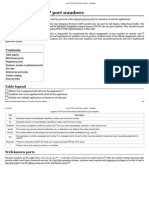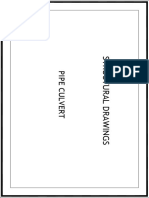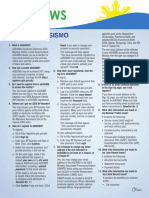1 • 1.1.
Concept, role and
characteristics of communication in
international business
Overview of
International • 1.2. The change of communication
Business activities in the digital age and the
Communications overview of communication tools
• 1.3. The media
1-1
1.1. Concept, role and
characteristics of communication
• Communication is simply the
exchange of meaning.
1
� COMMUNICATION
SMCR Model
The Source - Message - Channel –
Receiver (SMCR) model of mass
communication describes the exchange
of information as the message passes
from the source to the channel to the
receiver, with feedback to the source.
The source is the originator of the communication.
The message is the content of the communication, the
information that is to be exchanged.
An encoder translates the message into a form that can
be communicated— often a form that is not directly
interpretable by human senses.
A channel is the medium or transmission system used
to convey the message from one place to another.
A decoder reverses the encoding process.
The receiver is the destination of the communication.
A feedback mechanism between the source and the
receiver regulates the flow of communication.
Noise is any distortion or errors that may be introduced
during the information exchange.
1.1. Concept, role and characteristics
of communication
Integrated Marketing Communications (IMC)
American Association of Advertising Agencies (the
4As) developed one of the first definition of IMC:
“A concept of marketing communications planning that recognizes
the added value of a comprehensive plan that evaluates the
strategic roles of a variety of communication disciplines (e.g.
general advertising, direct response, sales promotion, and public
relations) and combines these disciplines to provide clarity,
consistency, and maximum communication impact.” (The 4 As,
1989)
1-6
2
�1.1. Concept, role and characteristics
of communication
Integrated Marketing Communications (IMC)
– Coordinate various promotional elements and other
marketing activities that communicate with a firm’s
customers
– Recognize the added value of a comprehensive plan that:
• Evaluate the strategic roles of a variety of communication
disciplines
• Combine the disciplines to provide clarity, consistency, and
maximum communications impact
– Ensure all marketing and promotional activities project a
consistent, unified image
1-7
Reasons for IMC growth
(1) Fragmentation of Media
(2) Database technology
(3) Consumer empowerment
(4) Advertising Clutter
1-8
Advertising Clutter
3
� Importance of IMC
• Strategically integrates the various communications functions
• Avoids duplication and takes advantage of synergy among
promotional tools
• Develops more efficient and effective marketing
communications programs (maximize ROI in MKT &
promotion)
• Changing environment
– Evolution to micromarketing
– Consumers’ unresponsiveness to traditional advertising
– Changing rules of marketing (Shift from media advertising to other forms
of marketing communication, Rapid growth of database marketing,
Demands for greater ad agency accountability, Rapid growth of the
Internet, Increasing importance of branding...)
1-10
The role of IMC in the marketing
process
1-11
Case Study Analysis:
Charmin (20 mins)
• Form a group
• Watch the video (8 min)
• Identify all Communication Tools/ Communication
media used in this case (10 min).
4
� 1.2.The change of communication activities in
the digital age and the overview of
communication tools
• The change of communication activities in
the digital age
• Overview of communication tools
1-13
The change of communication
activities in the digital age
Changing communications landscape
Decreasing number of viewers and readers of mass
media
Digital media target specific audiences
Consumers are not passive message receivers
Information comes from different sources
New media
Internet (banner ad, video ad, website...)
Social media
Mobile
(dùng app) => rất potential 1-14
The change of communication activities in
the digital age
1950s- • Internet
1960s
1970s- • Email & The World Wide Web
1980s
• Internet expansion
1990s • 1998: Google
• Social media
• 2003: WordPress. LinkedIn and Skype. First commercial mobile SMS.
• 2004: Facebook
2000s- • 2005: Youtube
Now • 2006: Twitter
• 2007: Apple Iphone
1-15
5
� From Selling the Four P’s
to Commercializing the Four C's
4P's 4C's
Companies develop Customers can customize Eg: customize giày tại
Product Co-Creation
products developed and personalize products hãng/Share a coke của
according to customers' and services Cola
needs and wants
Companies use cost-based, Dynamic pricing – flexible
competition-based, and Price Currency prices based on market
customer value-based demand and capacity
pricing utilization
Peer-to-peer distribution
customers sẽ có những nhóm consumption
Companies decide where to
Place Communal – access to products and community để họ share
distribute the products for Activation services are served
customers' convenience
=> optimize the consumption of the products
instantly with the peers in eg: đi bus, đi taxi chung tới 1 địa điểm (car
close proximity
pooling); mobile sharing
Companies sending Social media allows
messages to customers as Promotion Conversation
customers to converse
audiences through ads, PR, with each other. 2 way conversation: giữa brand với
sales promo, etc. customers
Source: Kotler, Kartajaya, and Setiawan 2017
E.g. The rise of customer-rating
• Conversation •
systems such as TripAdvisor has
provided a platform for customers
to have conversations about and
offer evaluations of brands they
Social media allows have interacted with.
customers to converse
with each other. chỉ brands
among customers, ko
with cus
Traditional – one-sided
affair, with companies
sending messages to
customers as audiences.
Now, social media enables
customers to respond to
those messages and
converse about the
messages with other
customers.
Source: Kotler, Kartajaya, and Setiawan 2017
6
� What should companies do in the
current landscape?
• Companies must communicate their value propositions to
customers, and what they communicate should not be left to
chance. All communications must be planned and blended
into carefully integrated programs.
• Companies now are doing less broadcasting and more => use less traditional/mass media, but the ones that
allow brands to target their specific customers.
narrowcasting that “reach – and have a conversation with – Eg: Instagram - young users, brands thường kiểu beauty,
small clusters of consumers who are consuming not what is education,...
force-fed to them, but exactly what they want”. Eg: Dare coffee - ghi trong note
=> lesson cho brands
• However, the mix of both traditional mass media and new,
more-targeted personalized media (digital media) should be - Strategic clarity (get our message, target and commu objectives and what brands define themselves
clear) before tactical execution: chiến lược trước rồi mới chiến thuật
used.
- Incremental ROI of Additional channels: càng nhiều channel choice trong 1 campaign càng tốt
- media neutrality - should be objective when choosing channels
- say yes to both digital and traditional
- Positioning as the "red line" connecting channels: Importance of positioning that will connect channels
<công cụ truyền thông>
Overview of communication tools 1 CCTT sử dụng nhiều Phương tiện TT
nếu là phải trả phí => là chạy QCao (Advertising), còn
• 1. Advertising nếu ko thì là công cụ khác (eg: PR trên fanpage
facebook) 3 khái niệm cần phân biệt:
Advertising is any paid form of non-personal presentation and - Tool (6 cái) - promotional tools
promotion of ideas, goods, or services by an identified sponsor: - Media (means we use to deliver the message) - 3 loại: Paid, Owned, Earned - gồm nhiều channels.
- Channels (more specific than media) - ko phải 1 nhóm phương tiện chung chung nữa, mà là 1 kênh.
Broadcast Print Internet Outdoor Eg: 1 nhóm phương tiện truyền thông => chọn kênh Facebook, Ig hay Twitter,...
• Source: Kotler et al. (2017)
7
� • 2. Public Relations
Public relations involves
building good relations
with the company’s various
publics by obtaining
favorable publicity,
building up a good
corporate image, and
handling or heading off
unfavorable rumors,
stories, and events.
• Press releases
• Sponsorships
• Special events
• Web pages
• Source: Kotler et al. (2017)
• 3. Sales Promotion
Sales promotion is the short-term incentives
to encourage the purchase or sale of a
product or service.
• Discounts
• Coupons
• Displays and Demonstration of items
• Source: Kotler et al. (2017)
• 4. Personal Selling
Personal selling is the
personal presentation
by the firm’s sales
force for the purpose
of making sales and
building customer
relationships
• Sales presentations
• Trade shows
• Telemarketing
• Source: Kotler et al. (2017)
8
�• 5. Direct Marketing
Direct marketing: Direct connections
with carefully targeted individual
consumers to both obtain an immediate
response and cultivate lasting customer
relationships – the use of direct mail, the
telephone, direct-response television,
email, the Internet, and other tools to
communicate directly with specific
consumers
• Catalog
• Telemarketing
• Kiosk
• Internet
• Mobile phone
• Etc.
• Source: Kotler et al. (2017)
1.3. The media
Two broad types of communication channels:
Personal Communication Channels
Channels through which two or more people
communicate directly with each other, including face to
face, on the phone, through mail or email, or even
through an Internet “chat”
Is suitable for products that are expensive, risky or has
high-involvement purchase decision. High-involvement
purchase occurs when the consumers spend a lot of
time, efforts and/or finance to buy or make decision to
buy the product.
Is effective because it allows personal addressing and
feedback.
1-26
1.3. The media
Channels of personal communication:
• Company’s control (salespeople, opinion leaders, buzz
marketing): Opinion leaders are people within a
reference group who, because of their special skills,
knowledge, personality, or other characteristics; exerts
social influence on others; Buzz marketing involves
cultivating opinion leaders and getting them to spread
information about a product or service to others in their
communities
• Independent experts
• Word-of-mouth: is very crucial because “90% of
customers trust “recommendations from consumers”.
1-27
9
� 1.3. The media
Non-personal Communication Channels
• Media that carry messages without personal
contact or feedback, including major media,
atmospheres, and events
Major media include:
• Print media (newspaper, magazines, direct-mail)
• Broadcast media (radio, television)
• Display media (billboards, signs, posters)
• Online media (Internet, website, social networks)
• Electronic devices & digital (mobile phone, tablet)
1-28
1.3. The media
IMC INVOLVES AUDIENCE CONTACTS
1-29
Activity (10-15 min)
• In group, choose a brand
• Identify all the owned, paid, and earned
media of the brand
1-30
10













